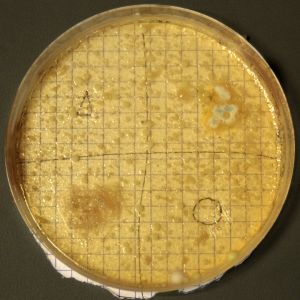Lecturer: Mindaugas Gapševičius
Credits: 6 ECTS, 4 SWS
Date: Thursday 13:30-16:45
Venue: Marienstraße 7b, Biolab (Room 202)
First meeting: Thursday, 13 April 2017; 13:30-16:45
Board games are usually designed for people, but could we think of a board game designed to be played between humans and flies or between bacteria and yeast? What about a more complex game involving humans, microorganisms and objects?
The aim of the course is to grasp the environment and interactions of chosen organism(s). While trying to understand biological sensors of living organisms (light, motion, temperature, magnetic fields, nutrients) we will envision and implement strategies for interaction between humans and nonhumans. The course will include analysis of sensorimotor activity of the selected organisms, discourses around similar artworks and discussions on interactivity in a physical environment.
The course will be held in the DIY Biolab of the Media Environments chair. The developed games will be presented during the planned show in the Fall of 2017.
Syllabus
- Organisms
Grading
20 % Theory
50 % Practical implementation of the project
30 % Documentation including 10% of updates in Wiki
Eligible Participants
Undergraduates and graduates enrolled in the faculties of Media and Design.
Related projects
Dan Young
Lumberjacked!, http://classic.rhizome.org/artbase/artwork/35526/
Lumberjacked! allows game player to play computer games against Trees. By using the Tree Game Controller Unit it is possible to link a tree up to a pc or laptop and play specially designed games against it.
Wim van Eck
Bug-man, http://www.wimeck.com/portfolio-items/bug-man/
A Pac-Man computer game in which the virtual ghost characters are controlled by real crickets that run around in a real maze.
Ken Rinaldo
Augmented Fish Reality (2003), http://www.kenrinaldo.com/portfolio/augmented-fish-reality/
The Augmented Fish is comprised of 5 rolling robotic fish-bowls, designed to explore interspecies and transpecies communication. In these interactive robotic sculptures, Siamese fighting fish use intelligent hardware and software to move their fish bowls anywhere that they desire.
Ingmar Riedel-Kruse lab at stanford university
Trap it!, http://web.stanford.edu/group/riedel-kruse/publications/CHI517-lee.pdf
Museum visitors could use blue, green or red light to draw patterns on the screen and observe how the Euglena reacted. The microorganisms avoided blue light, so drawing a circle around one of the microbes would trap it, which became the name for one of the scientific mini-games
Euglena soccer, https://www.youtube.com/watch?v=3lwU9deF8rw start at 27:05
Players earn points by guiding the Euglena through the goal posts.
GMU
Blocksworld repopulated! (2016), http://biogames.eu/
“The BioGame ‘Blocksworld repopulated!’ gives you the opportunity to plunge into a labyrinth populated by microorganisms that you can interact with. Instead of encountering programmed entities in ‘Blocksworld repopulated!’ you are playing with living Euglenas, uni-cellular organisms that are part plants and part animals.”
